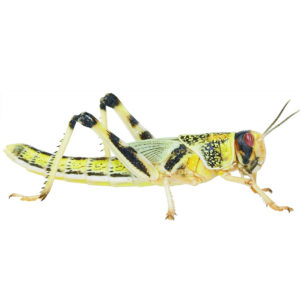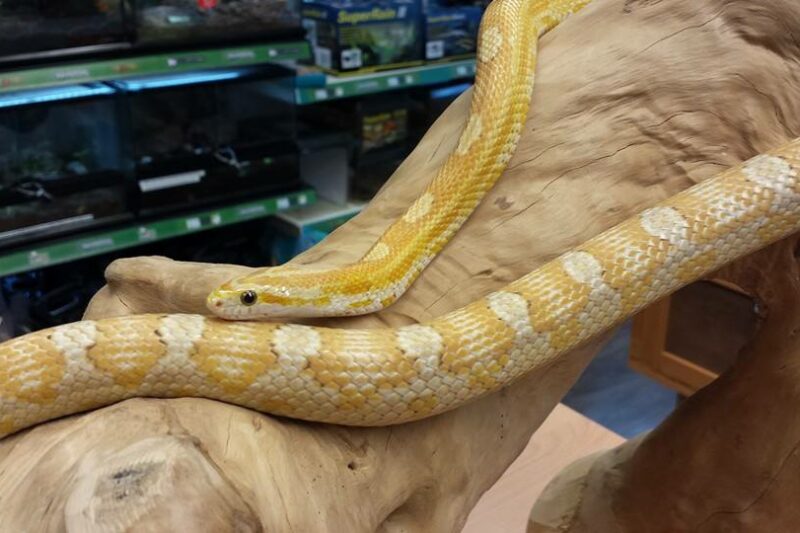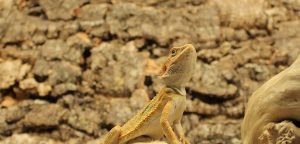
Live food Loyalty Program — Only at Our Kidlington Store!
Calling all reptile keepers and bug lovers! Stock up and earn rewards every time you purchase live foods in-store. 🦗 Get 50 Bonus Points When

Corn snakes (Pantherophis guttatus) are popular pet snakes known for their docile nature and beautiful colours. Proper feeding is essential for their health and well-being. In this guide, we will explore the feeding habits of corn snakes and provide tips to prevent obesity, a common concern among captive reptiles. This is also helpful for other species of snakes.
1. Feeding Frequency: In general, corn snakes should be fed once every 5-7 days when they are young, gradually transitioning to once every 10-14 days as they reach adulthood. Adjust the feeding schedule based on your snake’s individual metabolism and activity level, ensuring they maintain a healthy body weight.
2. Prey Size: Corn snakes primarily feed on appropriately sized rodents, such as mice or rats. The prey item should be no larger than the snake’s widest body girth. Avoid feeding prey that is too large as it can lead to regurgitation or other digestive issues.
1. Portion Control: It’s essential to provide an appropriate-sized prey item to prevent overfeeding. Avoid offering prey that exceeds 1.5 times the diameter of the snake’s body. Overfeeding can lead to obesity and other health problems.
2. Feeding Schedule: Stick to a regular feeding schedule and avoid offering excessive meals. Remember, corn snakes have slower metabolisms compared to some other snake species, and they can handle longer intervals between feedings.
3. Monitor Body Condition: Regularly assess your snake’s body condition. A healthy corn snake should have a slender, muscular body without visible fat deposits. If you notice excessive weight gain or bulging sides, adjust the feeding schedule and prey size accordingly.
4. Exercise and Enrichment: Encourage natural behaviours and activity by providing climbing structures, hides, and ample space for movement. These activities help maintain muscle tone and prevent sedentary behaviour that may contribute to weight gain.
5. Balanced Diet: Ensure a varied and balanced diet for your corn snake. Feeding only one type of prey can lead to nutritional deficiencies. Consider offering a rotation of mice and rats of appropriate sizes to provide a diverse nutritional profile.
6. Avoid “Power Feeding”: Power feeding, or offering prey that is too large or too frequent, can result in rapid weight gain and obesity. Stick to appropriate-sized prey and follow a consistent feeding schedule to promote healthy growth.
7. Consult a Veterinarian: If you are uncertain about your corn snake’s diet or concerned about their weight, consult a reptile veterinarian. They can provide guidance, conduct health assessments, and offer tailored advice to meet your snake’s specific needs.
Feeding corn snakes properly and preventing obesity is essential for their long-term health and well-being. By understanding their feeding habits, practicing portion control, and providing a balanced diet, you can help your corn snake maintain a healthy weight and avoid the associated health risks. Regular monitoring, exercise, and enrichment activities further contribute to their overall fitness and vitality. Remember, each snake is unique, so it’s crucial to assess their individual needs and consult with a reptile veterinarian for personalized advice. With proper care, your corn snake will thrive and bring you joy for years to come.
Read our Corn Snake Care Guide

Calling all reptile keepers and bug lovers! Stock up and earn rewards every time you purchase live foods in-store. 🦗 Get 50 Bonus Points When

Why Do UVB Lamps for Reptiles Need to Be Replaced and How Often UVB lamps are essential for the health and well-being of reptiles, but

Why Reptiles Require UVB Light and How Their Bodies Use It Reptiles, unlike mammals, cannot synthesize vitamin D3 through their diet alone. Instead, they rely
Copyright 2021 Evolution Reptiles
All rights reserved.